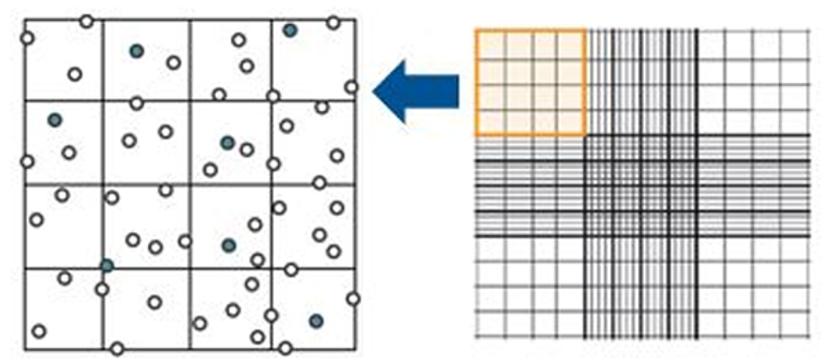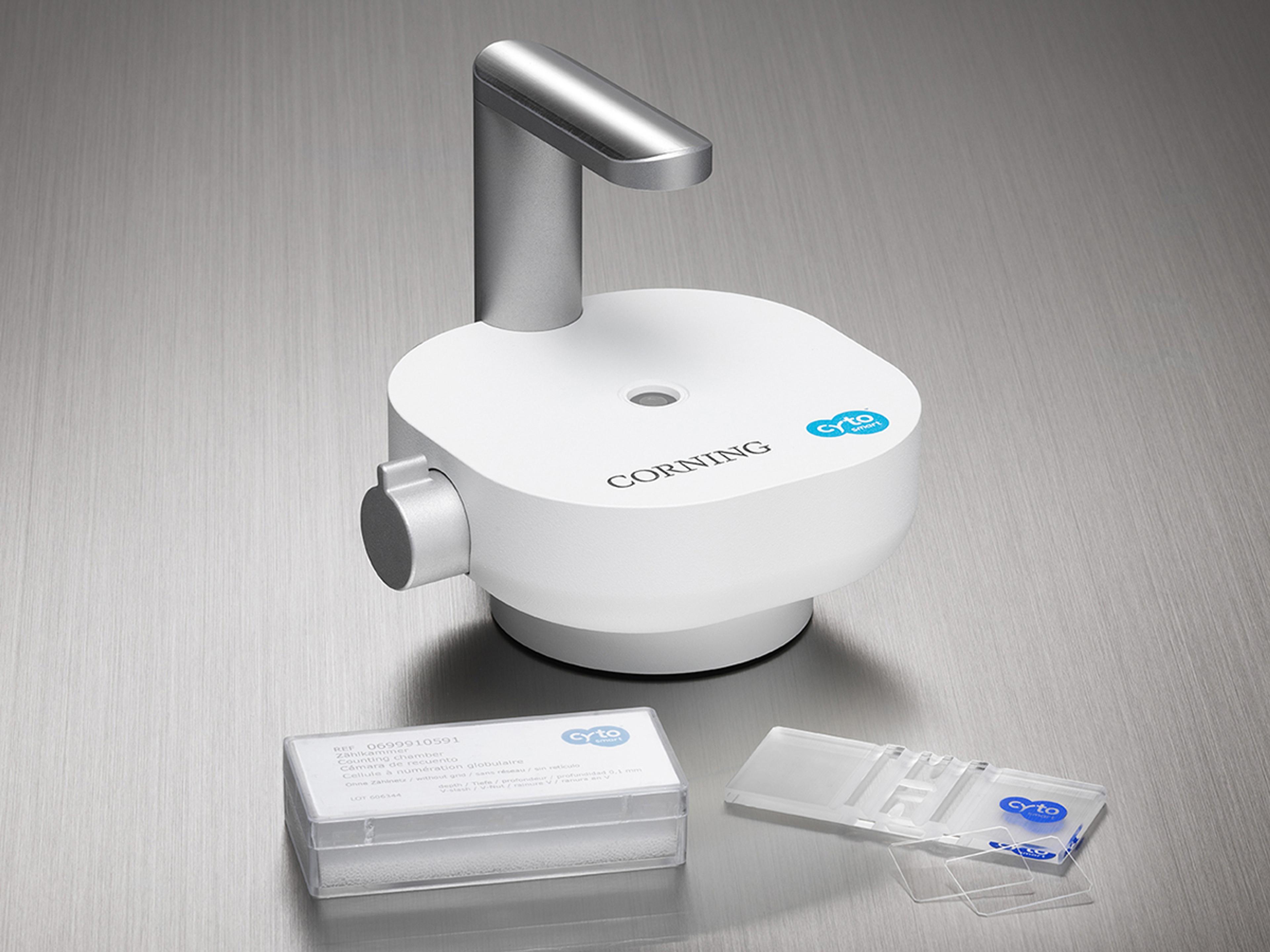Cloud-based tech promises superior cell counting performance
We hear how scientists’ feedback helped shape an automated cell counter with a difference
5 Nov 2021

Traditionally, manual cell counting involves using a microscope to count all individual cells in a sample. However, there are inherent issues with using this user-dependent technique, which can lead to inconsistent results, low reproducibility and time-consuming processes. In this SelectScience® article, Alex Toomey, product line manager at Corning Life Sciences, introduces the automated Corning® Cell Counter and describes how it can help researchers overcome common manual counting challenges to achieve faster, more accurate, and repeatable results.
SS: Tell us a bit about your role
AT: I'm the product line manager for our imaging portfolio, molecular biology benchtop equipment, and general use laboratory plastics. The product line management role is a business operations role. We work with all functions of the company to get the product and solutions out to the end-users. I’ve been with Corning Life Sciences for almost three years now where I started with a role within our scientific support organization.
SS: What are the main differences between manual and automated cell counting?
AT: Manual counting is the traditional way of counting, which involves looking under a microscope and counting all the cells in a sample. However, we are seeing greater adoption of automated cell counting. If you look at this gridded hemocytometer below (Figure 1), this demonstrates the manual method of counting. This is carried out by putting 10 microliters of cell solution into the gridded chamber. The scientist would then begin counting all the cells within the quadrants of the grid and then average those together to identify the cell concentration.

Additionally, many customers want to derive both the live cell and dead cell concentration. For this, the scientist would carry out a viability assay for monitoring the cell health and proliferation rate via a cell staining technique. Viability is simply the percent of your population that is live, versus the percent of the population that's dead. The reason to monitor the viability data is to know how healthy a suspension is before using these cells in downstream applications. Trypan blue is the most common stain in cell counting and has a characteristic to attach to the dead cells (Figure 1, blue cells), adding complexity to manual calculations.
When you are thinking about repeatability, it’s a bit of a gray area in the manual counting space. For example, you and I would most likely get different results when counting manually, even when trained properly. So, user to user, the results and estimations are going to vary. The number of steps involved in manual counting is far greater than the automated method, increasing the margin for error. Considering the varying results, it makes sense to move over to the automated cell counter where you are going to get the most reproducible results at the fastest rate by allowing machine learning algorithms to carry out the calculations for you.
SS: How is automated cell counting benefiting your customers?
AT: It comes down to three major points, one being the speed of the automated counts, another being the accuracy, and the third being the low cost of use over time:
- Time is of the essence nowadays, especially with everything going on in the world, from the pandemic to day-to-day life. If you can save time in any way, your lab will reap the benefits. In this case, cutting down on manual calculations and utilizing a counting algorithm paired with intuitive software expedites results.
- Secondly, the accuracy. Once you set your focus, the accuracy from count to count is going to be spot on with what the users see. It's quite normal in manual counting for individual users to deviate greater than 10% in their calculations, which in many cases has become accepted. The automated counting technique mitigates that and decreases the deviation.
- And lastly is the low cost aspect. We offer a reusable counting chamber, which allows the customer to clean their chamber after every use. Though our counter is compatible with any regular hemocytometer or disposable chamber with a height of 0.1mm, it doesn't require a single-use disposable chamber which can significantly increase a lab’s annual spend. Lastly, the cloud storage is unlimited at purchase so there are no additional charges as you track your results over time.
SS: How does the Corning Cell Counter help overcome common challenges?
AT: Our automated cell counter computes on a machine learning cloud-based algorithm. This provides consistent data across different users. I have found that the cloud-based technology has truly leveraged the voice of the customer to improve based upon individual customer needs. Through various feature enhancements, we've been able to enhance our automated cell counter, and we've been able to meet the customer needs time after time.
An example of this would be the added histogram feature. This tab shows you a live and dead population. This was an ask early in the lifecycle of the cell counter, and we were able to implement that at no additional cost. Additionally, the dilution calculator was another added feature. This feature calculates how many milliliters to mix in with your buffer for downstream use, and how many cells would be needed for the experiment as well.
As a result of customer feedback, in July 2021 we implemented the autofocus feature into the Corning Cell Counter This works by the user simply selecting the ‘autofocus’ icon and confirming the counting chamber specifications they’re using. Once confirmed, the autofocus algorithm scans the field of view for the optimal contrast based on your chamber inputs.
With that being said, we do know that there are going to be challenges that continue to arise in the space, and our solution is equipped to adapt throughout the product's lifecycle.
A short video demonstration to show the Corning Cell Counter autofocus feature in action, from Corning Life Sciences
SS: If you had to summarize, what are the key standout features of the Corning Cell Counter?
AT:Aside from speed, accuracy, and low cost, I would say that it is the cloud-based aspect, as it has proven to be adaptable and meet unique customer needs. The added functionalities immensely increase the value and throughput of this device. You can also view your projects and experiments via the cloud link at cloud.cytosmart.com, which is hosted by the Microsoft Azure cloud. This cloud-based option gives remote data and unlimited storage, which is another great benefit. So, you can go ahead and take your counts in the lab, and then you have the additional remote accessibility. This means you can access your data through your iPhone, through your Android, or even your home laptop as well.
SS: What do you see as the future developments in this area?
AT: The development that I'm most intrigued about is the organoid counting software, which is set to launch in Q4 2021.
When a user is harvesting 3D cell cultures, they are going to form either organoids, spheroids, or tumoroids. CytoSMART has developed a software extension to the Corning Cell Counter in order to capture data based on what a particular 3D population looks like. For example, is your 3D figure irregular in morphology, or does it have more of a spherical appearance to it?
If our users are working with organoids that are non-spherical, they will use Version 1 of the organoid counting software that is trained to engulf the entire figure to measure surface area and concentration data. Whereas, if you're working with more of a spherical object in your assays, you're going to select Version 2 of the organoid counting software. This version better detects spheres in clusters.
So, cloud-based automated counting is a huge benefit, and we've seen it in the field. But the development that we're going towards is a multi-market piece of equipment capturing data for 2D and 3D cellular analysis.
We have accomplished quite a few enhancements in a short amount of time since the Corning Cell Counter has been on the market. This has been driven by the Corning commercial and cross-functional teams doing a great job of getting out there and listening to our customers in an effort to provide the next solution as it relates to automated cell counting.
Do you use Corning Life Science instruments in your research? Write a review today for your chance to win an Amazon voucher worth $400.

